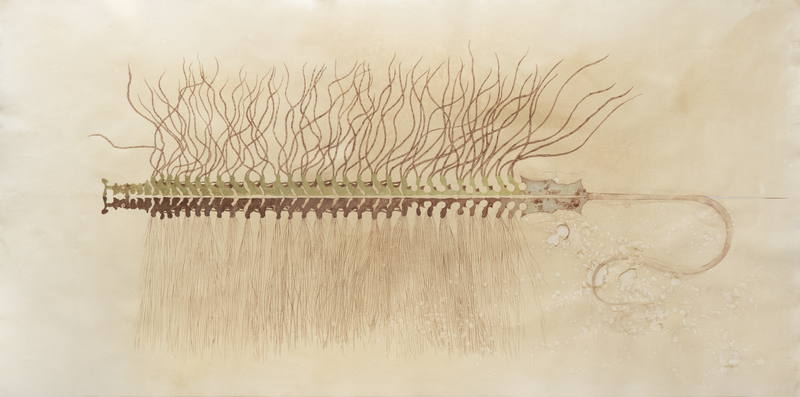
LATITUDE 28 presents ‘GULISTAN’, a captivating exhibition featuring the works of Gopa Trivedi, a master storyteller in visual art. Gops’s creations transcend temporal and spatial boundaries, weaving together traditions, mythologies, personal narratives, and historical accounts. Her meticulous technique, employing fine squirrel-hair brushes and intricate pardakht (dot-work), brings to life complex worlds on paper, blending traditional methods with contemporary themes.
Gopa’s artwork spans a diverse range of subjects, from anthropomorphic “monsters” inspired by ancient travelers’ tales to detailed botanical studies of Indian spices and flowers. She uses materials such as Wgi\gopasli or Canson Montval paper, incorporating khariya, gold and silver foils, mineral watercolors, walnut ink, and pencil. Her unique approach includes Qalam-kari for fine detailing, coffee staining for vintage effects, and stone burnishing for color intensity, resulting in visually stunning and conceptually rich pieces.
‘GULISTAN’ explores themes that resonate deeply with India’s artistic and cultural history. Trivedi examines the colonial influence on Indian art and identity, particularly focusing on the “Company Style” and its impact on indigenous artistic traditions. Through her work, she investigates the concept of ‘othering’ in nationalistic ideologies and reimagines historical narratives through a contemporary lens. This exhibition invites viewers to immerse themselves in Gopa Trivedi’s intricate worlds, where past and present, myth and reality intertwine in a mesmerizing visual tapestry.
CURATORIAL NOTE
Gulistan by Gopa Trivedi represents an allegorical garden that blossoms with botanical species and hybrid creatures. A hundred and twenty-eight of the paintings, laid out in the format of the Mughal char bagh, depict plants that were not indigenous to the subcontinent but were brought to the Indian shores hundreds of years ago through ancient trade routes, Western Colonialism, or even just floating naturally in the sea.
In painting delicate filaments, petals, and seed pods, Gopa looks to the botanical gardens of the 18th and 19th centuries that were once centres of imperial exploration and addresses their implications as a political tool, to in turn inquire into the act of othering and belonging, especially within the current politico-cultural landscape. Through these specimens, painted in the Kampani Kalam, she talks of their absorption into the Indian Naturalia, and how their forged origins, often differing from their historical realities, are now embedded in our collective memory, religious practices, and literature—both classical and vernacular.
Further exploring this idea of othering and belonging, another key reference is the work of Pliny the Elder, the Roman historian, naturalist, and philosopher who wrote the Naturalis Historia, in which he dedicated an entire volume to India. Since he never visited the region, many of his accounts were from stories that had travelled far and wide before reaching him. For instance, he mentions a race of men that dwell upon a mountain called Nulo, who have their feet turned backwards and have eight toes on each foot. By asserting such stories with authorial command, he actively created lores of mirabilia—of the wondrous and marvelous beings of far-off lands, whose descriptions were most often coloured with oriental prejudices and (mis)perceptions of the “other”.
Gopa comments on this notion of authorial command and questions the need for absolute truths. By highlighting the lack of such truths through multiple histories and myths that feature in the botanicals, she urges the viewer to face their own discomfort with uncertainty. The series ‘Monsters of Our Making’ further distorts these so-called histories by inventing creatures of renewed fiction, suspended between the imaginary and the real.
Composite “monsters” pose in stark contrast to their plain backgrounds as feathered bodies emerge from shoots and stalks, minute scales transform a fish to a lizard, and antlers bud into flowering branches. These are creatures in the making, existing in the world of the artist, and unleashed to inhabit the Gulistan that bridges what is ours and what is not.
-Text by Gautami Raju
















